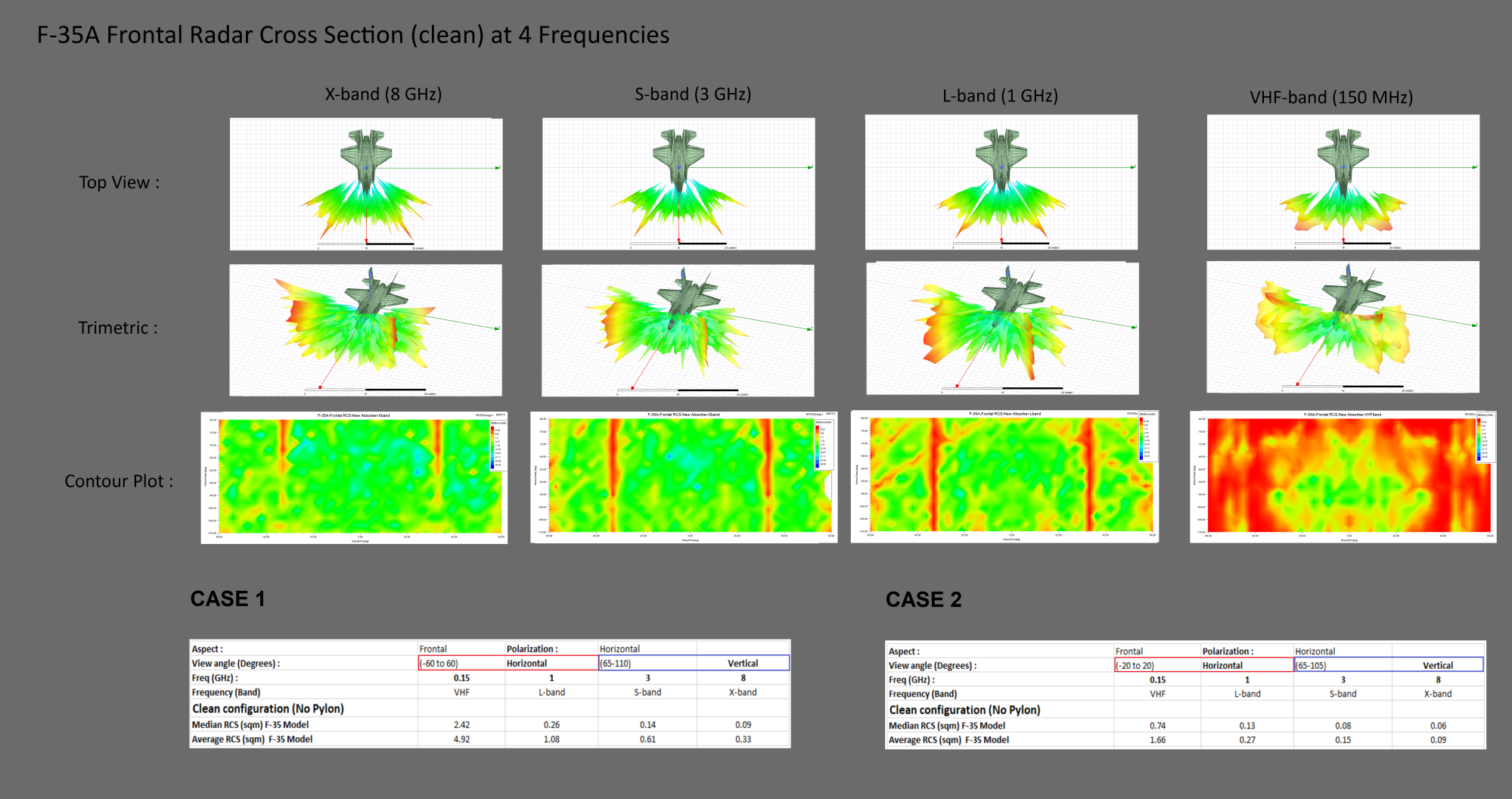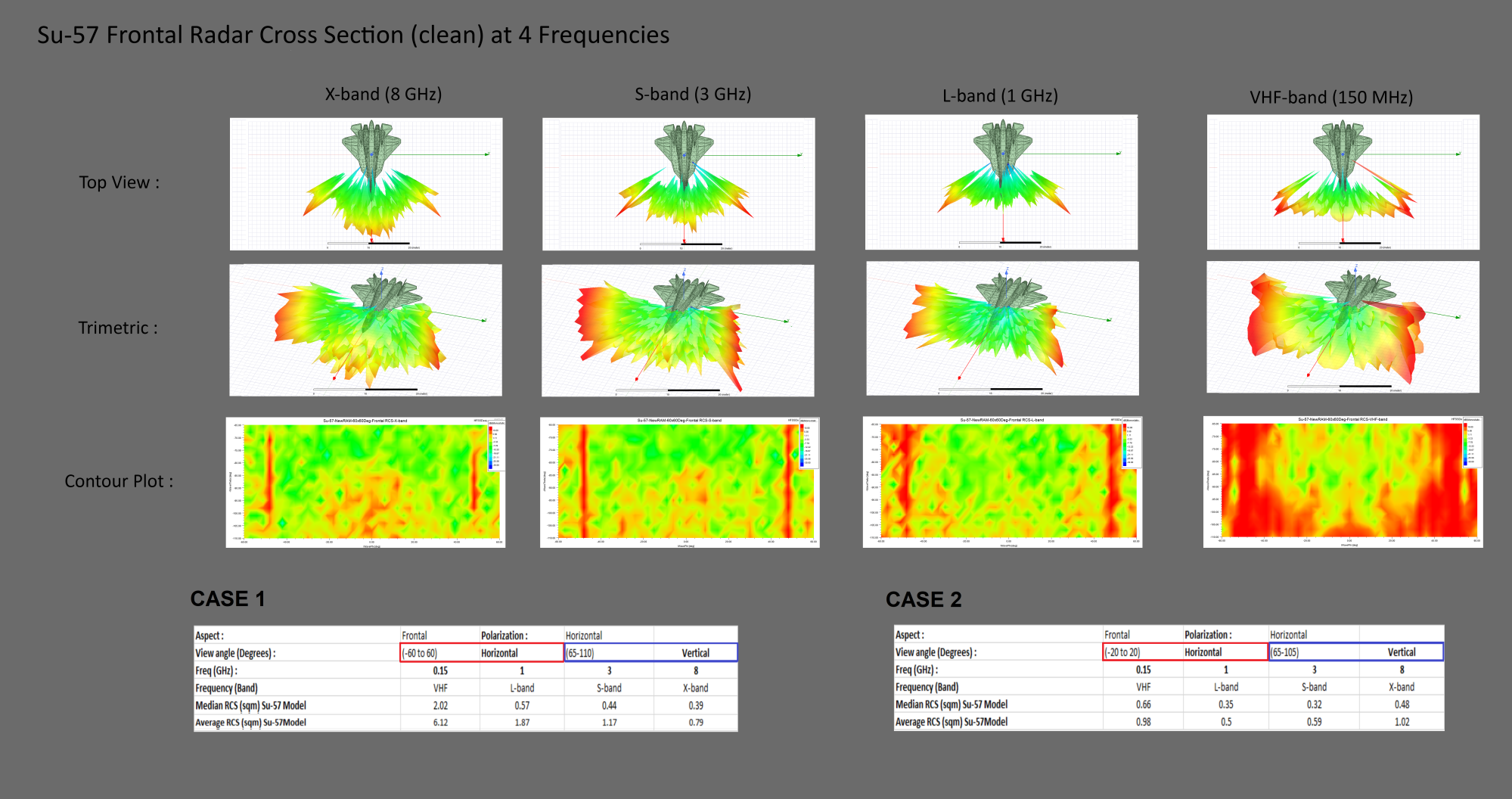Here are a few of the diagrams:
F-35

J-20

Su-57

F-16

Mean RCS figures on different bands (m2)
X-band
1. F-35 (0.09)
2. J-20 (0.28)
3. Su-57 (1.02)
4. F-16 (1.79)
S-band
1. F-35 (0.15)
2. J-20 (0.27)
3. Su-57 (0.59)
4. F-16 (2.00)
L-band
1. F-35 (0.27)
2. J-20 (0.32)
3. Su-57 (0.50)
4. F-16 (1.77)
VHF
1. Su-57 (0.98)
2. J-20 (1.39)
3. F-35 (1.66)
4. F-16 (3.46)


Unfortunately, they have not yet modeled the F-22 (they say the Rafale is next on their list). Several interesting observations here. The F-35 is the best overall performer. Its advantage is most pronounced in the X-band, where it has mean RCS three times smaller than the J-20 and eleven times smaller than the Su-57. Its edge falls off in the S-band to less than two to one against the J-20 and four to one against the Su-57. In the L-band, the J-20 has parity and the Su-57 is behind two to one. The VHF band is an exception; here the F-35 is the worst and the Su-57 is the best.
The J-20 is behind the F-35 but still pretty good. Its mean RCS in the X band is about the same as the F-35's in the L band.
Their model affirms the common belief that the Su-57 lags significantly behind its rivals in stealth. However, it does dispel the popular notion among Indian pundits on Quora that the Su-57 has the same RCS as a 4th generation fighter like the F-16 or the Super Hornet flying in clean configuration. Even without factoring in RAM, the Su-57 is far less observable than a clean F-16 in any bandwith.
The scatter diagrams also make it pretty obvious why all the sixth generation programs are going for tailless designs.
Interesting stuff, I look forward to future entries in their series.